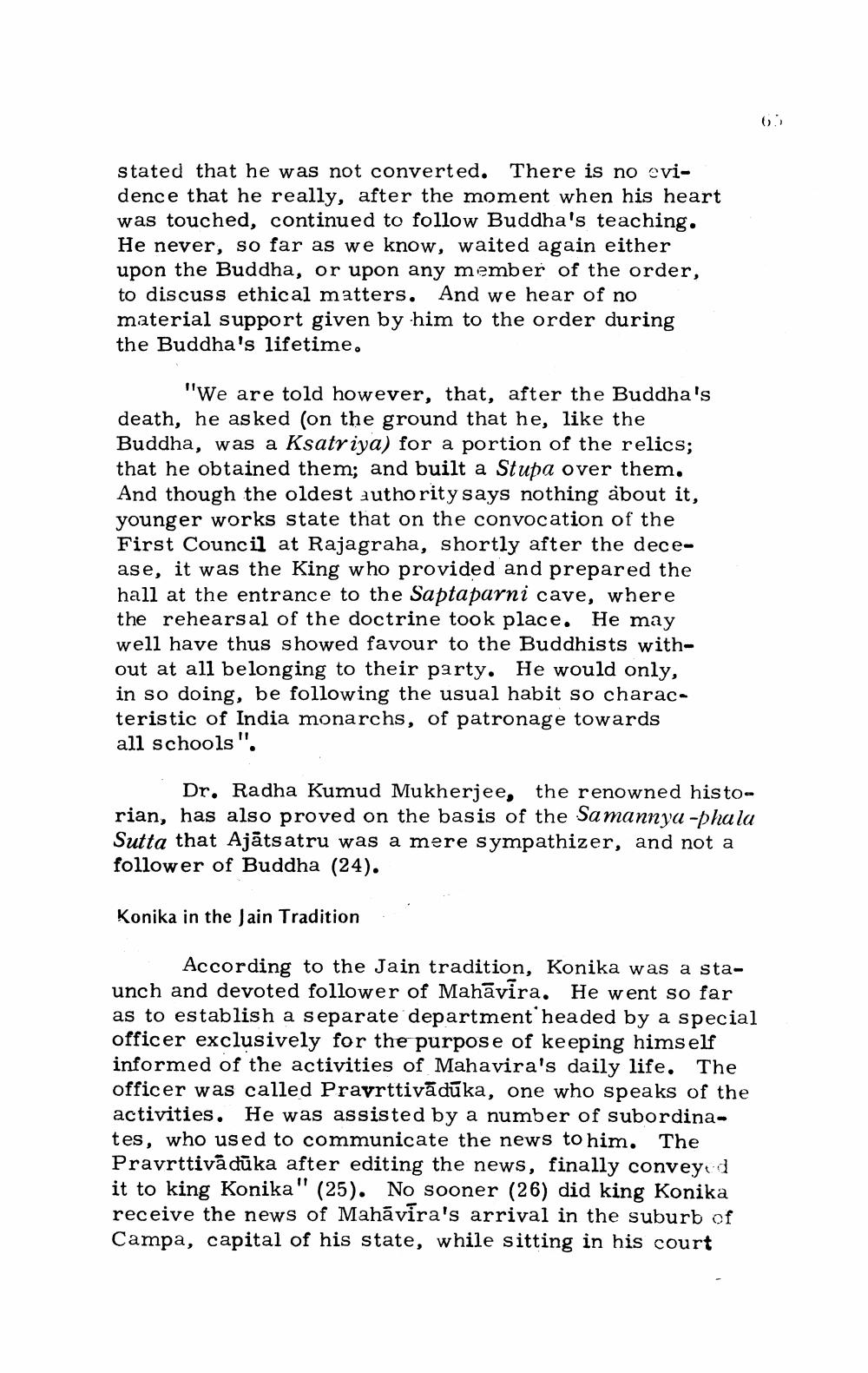________________
stated that he was not converted. There is no evidence that he really, after the moment when his heart was touched, continued to follow Buddha's teaching. He never, so far as we know, waited again either upon the Buddha, or upon any member of the order, to discuss ethical matters. And we hear of no material support given by him to the order during the Buddha's lifetime.
11
"We are told however, that, after the Buddha's death, he asked (on the ground that he, like the Buddha, was a Ksatr iya) for a portion of the relics; that he obtained them; and built a Stupa over them, And though the oldest authority says nothing about it, younger works state that on the convocation of the First Council at Rajagraha, shortly after the decease, it was the King who provided and prepared the hall at the entrance to the Sapta parni cave, where the rehearsal of the doctrine took place. He may well have thus showed favour to the Buddhists without at all belonging to their party. He would only, in so doing, be following the usual habit so characteristic of India monarchs, of patronage towards all schools".
Dr. Radha Kumud Mukherjee, the renowned historian, has also proved on the basis of the Samannya -phala Sutta that Ajāts atru was a mere sympathizer, and not a follower of Buddha (24).
Konika in the Jain Tradition
According to the Jain tradition, Konika was a staunch and devoted follower of Mahāvira. He went so far as to establish a separate department headed by a special officer exclusively for the purpose of keeping himself informed of the activities of Mahavira's daily life. The officer was called Prayrttivā dūka, one who speaks of the activities. He was assisted by a number of subordinates, who used to communicate the news to him. The Pravrttivā dūka after editing the news, finally conveyed it to king Konika" (25). No sooner (26) did king Konika receive the news of Mahavira's arrival in the suburb of Campa, capital of his state, while sitting in his court




